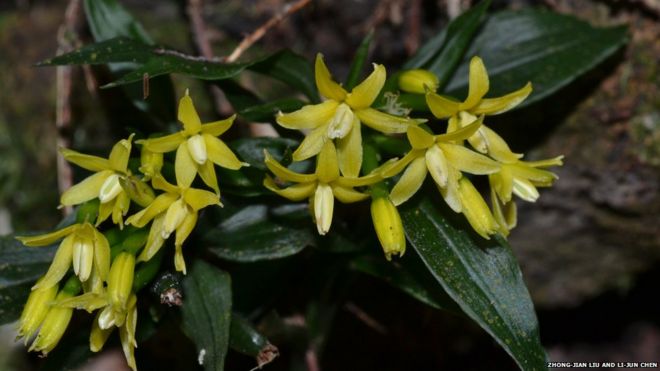Orchid gives up the secrets of its success
 ZHONG-JIAN LIU AND LI-JUN CHEN
ZHONG-JIAN LIU AND LI-JUN CHEN
The orchid is known for its beauty and once changed hands for vast sums.
Now, scientists are gaining an insight into how the plant prized for its beauty colonised almost every habitat on Earth.
A team in China has unpicked the genetic blueprint of an orchid that grows wild in the mountains of southeast China.
The orchid in question, from the subfamily, Apostasiodea, split off from modern species millions of years ago.
Researchers led by the Orchid Conservation and Research Centre of Shenzhen sequenced the genome of the orchid and compared it with more modern species.
 ZHONG-JIAN LIU AND LI-JUN CHEN
ZHONG-JIAN LIU AND LI-JUN CHEN
The data, published in the journal, Nature, "provides a reference for studying orchid evolution" and suggests distinctive features found only in orchids played a key role "in the tremendous radiation of the group", they say.
The orchid is one of the biggest families of flowering plants. Many are grown for their beautiful flowers, while others are of economic importance, such as the source of the food flavouring, vanilla.
Commenting on the study, Dr Trevor Dines, of the wild plant conservation charity, Plantlife, said orchids have a host of unique features that make them special and instantly recognisable.
"Whether you're looking at a big, blousy Moth orchid from the supermarket or a tiny rare Bog orchid on a remote Snowdonia hillside, the flowers have the same underlying blueprint," he said.
"This research reveals that elements of this blueprint appeared right at the very start of the evolution of the orchid family, and may well have helped in their spectacular subsequent evolution into the 26,500-28,000 species we know of today."
 ZHONG-JIAN LIU AND LI-JUN CHEN
ZHONG-JIAN LIU AND LI-JUN CHEN
Some of the unique features of orchids include masses of pollen, known as pollonia, exceptionally light seeds and the ability to grow upon other plants, using them for support.
All these features are found in the 50 or more species of wild, native orchids in the UK, from the Lady's-slipper orchid to the Bog orchid.







No comments
Post a Comment